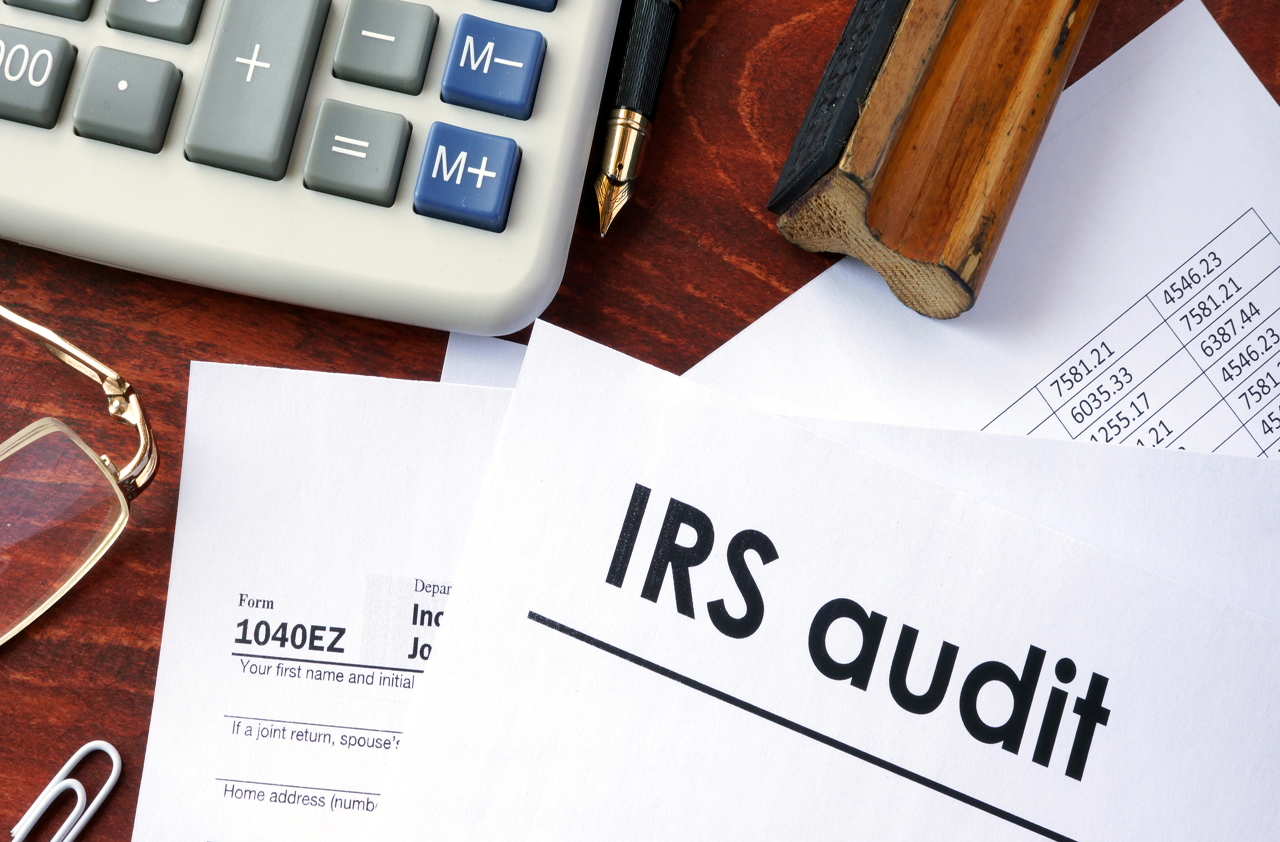Is Your Company Ready for the New Partnership Tax Audit Rules?
Unless you take action, you could be facing some unpleasant tax consequences.


Partnerships are one of the most commonly used business and estate planning tools, and they come in a variety of wrappers or names, such as traditional partnerships, multimember LLCs, joint ventures, limited partnerships and limited liability partnerships. So, it’s significant that starting this year, the way they are audited and taxed has undergone a sweeping change. The result: People operating under partnerships must update their agreements and be ready to cooperate with each other or face the possibility of paying higher taxes.
All partnership entities, even small companies with as few as two partners, members or shareholders, are affected by new audit rules put in place by the Bipartisan Budget Act of 2015. The law, which went into effect on Jan. 1, 2018, established new rules for the federal income tax audits of partnerships, LLCs, limited partnerships and S corporations. These rules require new language for any partnership or other governing agreement.
For example, the concept of a Tax Matters Partner is now replaced with a Partnership Representative, which comes with greater authority. A Partnership Representative must be designated to communicate with the Internal Revenue Service (“IRS”) in the event of an audit. That representative may, but is not required to, be a partner. The Partnership Representative must have a substantial presence in the United States, have a U.S. address, and a U.S. Tax ID number. This allows the IRS to communicate with one designated representative within the partnership who has sole authority to act on behalf of the partnership.

Sign up for Kiplinger’s Free E-Newsletters
Profit and prosper with the best of expert advice on investing, taxes, retirement, personal finance and more - straight to your e-mail.
Profit and prosper with the best of expert advice - straight to your e-mail.
A Big Change That Could Mean Higher Tax Rates
More important, these new rules allow the IRS to assess and collect taxes during an audit at the partnership level. In other words, the tax would be paid by the partnership at the highest individual or corporate tax rate. Traditionally, partnerships were purely flow-through entities that did not pay taxes. Any income would be passed out to the partners, who would then pay the tax at their individual or corporate tax rate. The partner’s individual rate is often lower than the highest individual tax rate. The assessment of the tax at the company level will typically result in more tax being paid.
Under the new rules, individual partners may not participate in the audit. An individual partner may not appeal the audit findings or assessment. This is a dramatic change from earlier years. Electing out, as discussed below, permits individual partners to participate in the audit and appeal the audit findings.
Additional complexity may also occur with partners who leave or disassociate after the year in which the partnership earns the income, but before the partnership is assessed additional tax in an audit. As indicated above, collection of this “partnership tax” and any penalties and interest is made at the partnership or company level. This is very important because the partners who bear the burden of paying the tax may not be the same people who were partners during the year under review or audit.
For example, if a partnership is audited for the 2016 tax year when the partners were Joe, Bob and Mike, and the audit is completed in 2019 when Dan and Edward are partners, then Dan and Edward may bear the burden of the tax liability even though they did not benefit from the tax filing.
Partnerships can elect out of these new rules under IRC Section 6221(b), but that election must be made each year. Given the potential for a higher tax liability on any amount of income assessed, partnerships would seem to want to make this election each year. Be sure to discuss that alternative with your tax adviser each year before your return is filed.
Note that a partnership interest held “in trust” is generally not eligible to elect out of the rules. While no direct statutory authority exists to evidence an exception for revocable trusts, they are typically viewed as “disregarded” entities for tax purposes. We suspect that this would permit an election out for a partnership interest held in a revocable trust. However, we do not yet have a guidance from the IRS on this issue.
How to Elect Out of These New Rules
The new tax law provides for certain elections to be considered in the event of an audit. Each election is described below:
Section 6221(b) election
Allows partnerships to opt out of partnership level tax collection and opt back in to the partner level collection. An election to opt out is made on a timely filed return. Once an election is made, the election is generally binding upon all partners. The election can only be revoked with the consent of the IRS. The partnership agreement should address the decision-making process for the election by the partners.
- To be eligible: (1) The partnership must have no more than 100 partners; (2) The partners must be individuals, a C Corporation or an estate of a deceased partner; and (3) Partnership interests owned by trusts are not allowed to use the opt-out election.
- If the election is made: The partnership must notify each partner of the election, the election must be made annually on a timely filed return, and the partnership must provide the IRS with the names or Employer Identification Number of each partner.
- If not elected, any audit will be taxed at the highest tax rate during the audit year.
- If not elected, the net investment income tax (NIIT) and alternative minimum tax (AMT) assessment at the partnership level could avoid partner-level NIIT and AMT.
- Partnership level taxation may save on state income taxes and could offset the higher rate that is associated with the new law.
Section 6226 election
Allows partnerships to shift the responsibility back to the partners by issuing a statement within 45 days of receipt of a notice of adjustment from the IRS.
- Each partner becomes responsible for their share of the adjustment tax.
- The partnership must issue a statement to each partner and the IRS (through a K-1) within 45 days of final notice of the adjustment.
Section 6225 option
Allows partnerships to reduce the taxes they owe in certain situations. This is a helpful option if partners have entered or exited the partnership and an audit has commenced during that time. This option requires participation of the partners from prior years.
In computing the imputed underpayment amount (IUA), a partnership may disregard any amount correctly reported on the partner’s returns if, within 270 days of receipt of the notice of proposed adjustment:
- The partnership issued an amended K‐1 to at least one partner and at least one partner files an amended return consistent with the amended K‐ 1 and pays all tax in full; or
- At least one of the partners from the audited year is tax‐exempt; or
- A lower rate should apply because a partner is a C Corporation or because an adjustment is made to a qualified dividend or capital gain.
The Bottom Line for Partnerships
First, businesses or activities conducted as LLCs, partnerships, joint ventures, limited partnerships or limited liability partnerships should review these rules and the ownership structures. If there is a desire to opt out of the new rules, be certain that you do not have any ineligible partners or members. The determination of whether there is an ineligible partner or member is made on Jan. 1 of each year.
Second, review the partnership agreement to ensure that the agreement is consistent with these requirements. Additional liability protection may be appropriate for the Partnership Representative in the agreement.
The duties agreement should consider the following:
- The Partnership Representative’s duties.
- The process for the designation and removal of the Partnership Representative.
- The partners’ consent that may be required, if any, for tax elections or settlements made by the Partnership Representative.
- How to ensure that the appropriate partners and former partners pay the appropriate allocation of partnership tax assessed at audit.
- Appropriate indemnification of the Partnership Representative.
- Restrict transfers of partnership interests to prevent admitting partners who are ineligible to opt out.
- The requirements for the partners and the Partnership Representative to obtain and provide information that may be needed to minimize or avoid any tax liability.
- Partners’ notice of IRS or state tax audits and rights to participate internally in connection with IRS or state income tax audits.
Jennifer Barcellos, law clerk at the Goralka Law Firm, contributed to this article.
Get Kiplinger Today newsletter — free
Profit and prosper with the best of Kiplinger's advice on investing, taxes, retirement, personal finance and much more. Delivered daily. Enter your email in the box and click Sign Me Up.

Founder of The Goralka Law Firm, John M. Goralka assists business owners, real estate owners and successful families to achieve their enlightened dreams by better protecting their assets, minimizing income and estate tax and resolving messes and transitions to preserve, protect and enhance their legacy. John is one of few California attorneys certified as a Specialist by the State Bar of California Board of Legal Specialization in both Taxation and Estate Planning, Trust and Probate. You can read more of John's articles on the Kiplinger Advisor Collective.
-
 AI Heads to Washington
AI Heads to WashingtonThe Kiplinger Letter There’s big opportunity for AI tools that analyze MRIs and other medical images. But also big challenges that clinicians and companies will have to overcome.
By John Miley
-
 Ask the Editor: Questions on Amended Returns and Property
Ask the Editor: Questions on Amended Returns and PropertyAsk the Editor: Taxes, April 18, 2025 — Joy Taylor, The Kiplinger Tax Letter Editor, answers questions on amended returns, property and deductions.
By Joy Taylor
-
 Ask the Editor: Reader Questions — April 18, 2025
Ask the Editor: Reader Questions — April 18, 2025Ask the Editor: Taxes, April 18, 2025 — Joy Taylor, The Kiplinger Tax Letter Editor, answers questions on amended returns, property and deductions.
By Joy Taylor
-
 Four Takeaways From Filing Your Taxes to Boost Your Financial Future
Four Takeaways From Filing Your Taxes to Boost Your Financial FutureNow that another tax season is in the rearview mirror for most of us, what lessons can you take from what you learned about your finances to plan for the future?
By Kate Winget
-
 What Claims Adjusters Are Thinking vs What They're Saying
What Claims Adjusters Are Thinking vs What They're SayingAfter a natural disaster, few of us are at our best, but here's what to keep in mind when you're interacting with your insurance company's claims adjuster.
By Karl Susman, CPCU, LUTCF, CIC, CSFP, CFS, CPIA, AAI-M, PLCS
-
 Looking to Make a Job Change? How to Stand Out Like a Pro
Looking to Make a Job Change? How to Stand Out Like a ProTo make a strong first impression in interviews or when networking, skip your job title and work history and use an opening gambit that highlights your talents.
By Anne deBruin Sample, CEO
-
 How Many IRS Commissioners Have We Gone Through This Year?
How Many IRS Commissioners Have We Gone Through This Year?IRS Who were the former commissioners, and why did they resign? Find out how IRS turnover can impact your taxes.
By Kate Schubel
-
 First 100 Days: Trump's Impact on Your Finances
First 100 Days: Trump's Impact on Your FinancesHere are some opportunities to consider regarding investing, interest rates and tax cuts as the financial landscape shifts under the new administration.
By Daniel Razvi, Esquire
-
 What Would Happen if You Put Your Tax Refund in an IRA?
What Would Happen if You Put Your Tax Refund in an IRA?Not only could you get a tax break, but the compounding effect over 35 years could turn the average refund into nearly $14,000.
By Romi Savova
-
 Children Can't Afford to Fly the Nest? Here's How to Help
Children Can't Afford to Fly the Nest? Here's How to HelpThe high cost of living means more adult children are staying at home. Here are four ways to help financially so they can eventually spread their wings.
By Kelli Kiemle, AIF®